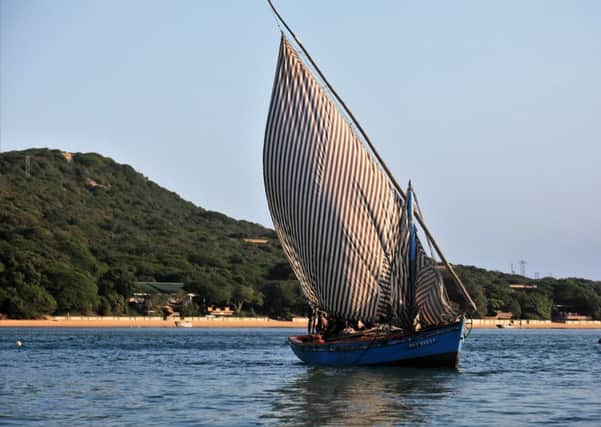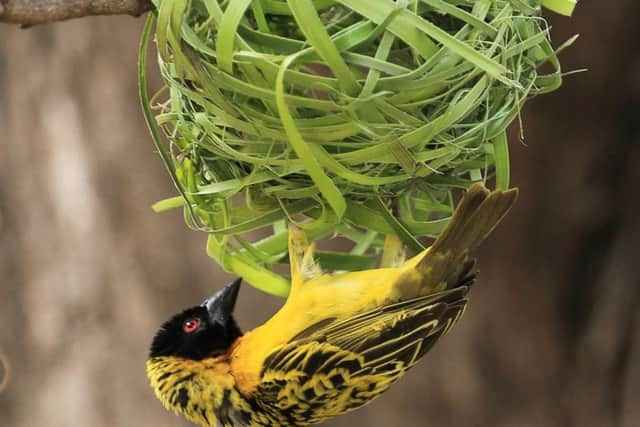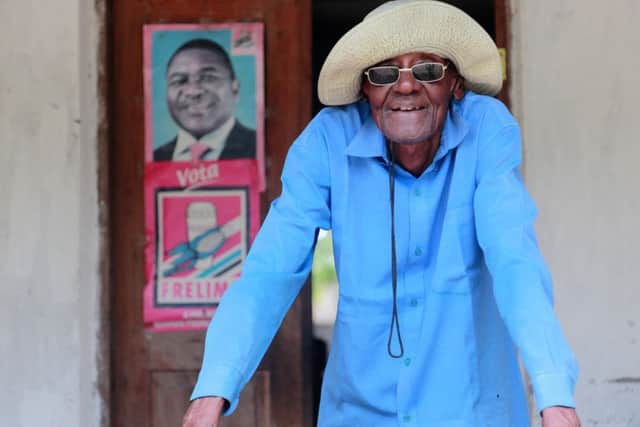Travel: Ibo island, Mozambique


The coastline of Mozambique stretches northwards for about 1,500 miles from its border with South Africa, some five times the length of Scotland. Most visitors spend their time in the south of the country but it’s a small island in an archipelago off the northern coast that offers somewhere astonishingly different and unlikely to be forgotten.
Ibo is the island that time forgot, but saying this suggests it might be inhabited by pterodactyls and other primeval creatures from the prehistoric era. Quite the opposite. There are no fearsome beasts unless you count the herd of goats that wander about daily, dutifully returning to their pens at night – this is not safari Africa – and history is the essence of the place.
Advertisement
Hide AdFor the adventurous there are dhow cruises and swimming with dolphins, cycling, kayaking through the mangrove or walking through it at low tide to a neighbouring island. Shoppers will delight in the workshops of local artisans who turn out painted trays, clothes, delicate silver filigree jewellery and straw hats, all at purse-friendly prices. No-one hassles you to buy anything and bargaining is a gentle affair.


Bird watching on Ibo is a breeze, with egrets and storks standing stationary in the mudflats and the usually rare western reef heron a common sight feeding alongside them. On land, exquisite bee-eaters and the unmistakable African hoopoe are not difficult to spot. Stroll into Ibo Island Lodge and you’ll see close up the village weaver birds that have colonised two trees there.
Bars and restaurants fill in the hours when you’re not out and about and at night you can roam anywhere in complete safety. There is a police station but no crime and the policeman sheepishly wanders about with an unused machine-gun over his shoulder. The 3,500 Mozambicans who live on Ibo go about their daily lives oblivious to visitors. Children playing with balls made of tightly packed plastic bags held together by twine will pause to practise their English on you but most of the time you have the island, its haunting past, night skies and rich birdlife all to yourself.
Ibo was known to Arab traders for centuries before the Portuguese arrived to make it their colony and an important centre of the slave trade. Merchants grew rich dealing in amber and ivory and built their villas and mansions, warehouses and shops until commerce moved to the mainland at the beginning of the 20th century. The end of Portuguese rule in 1975 sealed a colonial time capsule on Ibo and its unique architecture that mixes Swahili, Indian, Arab and Portuguese influences. Tree roots have loosened foundations and some buildings are ruins beyond repair but most are still standing though looking dilapidated. A bank, a hospital, a post office, a customs house and a church all bear testimony to what was once a busy town of 15,000 residents.
Walking the boulevards of the old town, the tropical heat occasionally mitigated by the shade of a dazzling flame tree in full bloom or a spreading mango tree, its fruit eagerly awaited by local children, is a journey into the past: most of the buildings are uninhabited and their crumbling columned verandas and ornate metalwork are ghostly reminders of a past age. You come across the occasional old mansion that now houses a government department, a flag desolately flying above the peeling limestone of its facade, but the past clings to the moss-covered stone walls. It feels like a deserted film set for a spaghetti western until women in their vividly coloured wrap-arounds, or capulanas, pass by and you realise this is Africa.


The grander villas have been preserved and are now lodges for accommodation. Three villas, including what was the Portuguese governor’s residence, now make up Ibo Island Lodge. The rooms are filled with antiques, sourced and shipped from Goa, and the tropical garden is filled with bougainvillea and African lilies. If you aren’t staying here, you should at least spend an evening here at the bar and restaurant on the balconied rooftop, looking out across the mangrove and the Indian Ocean. Good rooms are available at Cinco Portas, which uses an old warehouse and also has a pool and a lovely garden. Baobibo has bungalows with verandas overlooking the harbour and the nine rooms at Miti Miwiri are comfortable and attractive.
Advertisement
Hide AdThere is little land for cultivation on Ibo and fishing is at a subsistence level. Dug-out canoes and dhows with their sails drawn like bows are a familiar sight on the water or coming in to land with their catch. You’re also likely to see Ibo women with their faces covered in a white paste, or musiro, which is made from crushed wood. It works as a beautifying agent and sunblock and small blocks of it can be purchased from a tiny outlet in Fortim de Sāo António near the market. Silver and copper jewellery and Ibo coffee, from plants brought to the island by Arab traders, are also available here.
There are two other forts on the island, all put there by the Portuguese, and the biggest is the star-shaped Fortaleza de Sāo Joāo Baptista. Nowadays you’ll find artisans working with silver and ebony wood but during the struggle for independence (1965-75) political prisoners were kept here in atrocious conditions and many died. One who survived the ordeal, Joāo Baptista, was born on Ibo and he’s a familiar sight on the porch of his home alongside old posters of Frelimo, the party of independence that still runs the government.
Advertisement
Hide AdThe people of Ibo live cheek by jowl with the crumbling ruins of the old town and around the market there are a few shops and eateries serving local food. It’s best to visit them during the day and book a table for the evening. Non-guests can eat at any of the lodges – Cinco Portas is recommended – but Ibo is nothing if not languid so be ready for long waiting times at the bar while food is prepared. Luckily, drinks are not expensive, sunsets are stunning and night skies over timeworn Ibo town will entrance. This is not the Africa most visitors to the continent experience.


FACTBOX
Getting there: TAP Portugal (flytap.com 0345 601 0932) flies from London Heathrow and Gatwick to Maputo, Mozambique’s capital, from £572 return including taxes. From Maputo to Ibo means a domestic flight with LAM (lam.co.mz) to Pemba (around £300). From Pemba a 20-minute charter flight with CRA Aviation (craviation.co,mz) is expensive at £364 return per person but private car-and-boat transfers for up to four people are £245 through Baobibo or Miti Mitwiri; £326 with Cinco Portas.
Tour operator: Mahlatini Luxury Travel (mahlatini.com 028 90736050) can organise trips to Ibo Island.
Places to stay: Ibo Island Lodge (iboisland.com) is the best but most expensive place to stay (£306-330 per person sharing). Rates at Baobibo (baobibo.com) and Miti Mitwiri (mitimiwiri.com) are £40-£85; at Cinco Portas £40-£155.
In your luggage pack Bradt’s Mozambique travel guide; for bird watching, Roberts Birds Of Southern Africa can be uploaded to your mobile.